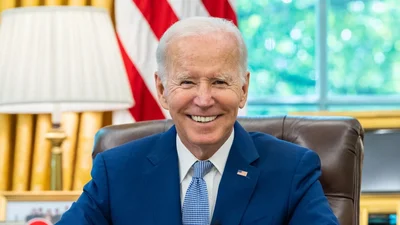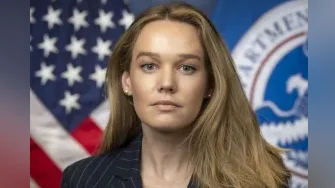FOR IMMEDIATE RELEASE THURSDAY, OCTOBER 13, 2005 WWW.USDOJ.GOV AG (202) 514-2008 TDD (202) 514-1888 The U.S. and Mexican Attorneys General along with officials from the Offices of the Attorneys General of the State of Texas and the State of Tamaulipas in Mexico met in San Antonio today to discuss mutual concerns and to review a series of law enforcement initiatives to strengthen our coordinated attack on the narco-violence plaguing the communities on both sides of the border.
Today=s high-level meeting followed a meeting in Houston on Sept. 13, 2005 of more than 100 federal law enforcement and criminal justice representatives of the United States and Mexico and their state counterparts from Texas and Tamaulipas to focus their attention, experience, and skills on developing initiatives and additional efforts to confront the increased violence attributed to narcotics trafficking in the border area. The meeting resulted in concrete recommendations for action and provided an opportunity for all to meet personally with counterparts across jurisdictions and across the border who are working against the troubling increase in narco-violence in the Southwest Border region.
The recommended and agreed-upon bilateral initiatives, some of which Attorney General Alberto R. Gonzales and Attorney General of Mexico Daniel Cabeza de Vaca highlighted at a joint press conference in San Antonio, Texas, today are as follows: TACTICAL LAW ENFORCEMENT EFFORTS The U.S. and Mexican federal and state criminal justice authorities have committed to coordinate law enforcement efforts, using all available legal authorities, to counter and quell the extreme narco-violence in the border area and to disrupt the flow of illicit proceeds that fuel that violence.
INFORMATION AND INTELLIGENCE SHARING The United States and Mexico will improve the coordination and timeliness of law enforcement information sharing between and among the appropriate U.S.-Mexican federal and state authorities and agencies on both sides of the border relating to narco-violence forces, forensics, prison security, victim/witness security, cross-border currency flows, and firearms trafficking.
As an example, the United States and Mexico will establish points of contact and a regular course of meetings to improve and expedite information sharing opportunities that will specifically enhance both sides= knowledge and capabilities to combat cross-border firearms trafficking.
The United States and Mexico will place special emphasis on the coordinated and prompt exchange of information about relevant events that occur on our respective sides of the border that may impact the other country so that both may effectively determine and initiate any necessary country-specific or coordinated law enforcement response.
TRAINING AND TECHNICAL ASSISTANCE The United States will provide Mexico with training and technical assistance in an array of criminal investigative areas, to include: Port of Entry Security: the United States will offer training for Mexican custom officials (vetted units) on the utilization of truck portal x-ray machines (previously provided by the USG) at strategically located ports of entry within Mexico; Forensics: the FBI will detail for the Government of Mexico (GOM) how they might best submit evidence to the United States for advanced forensic examination and analysis, explore opportunities to transfer U.S. lab equipment to the GOM (and provide necessary training on the equipment) to assist Mexican forensic personnel in advancing their forensics capability, share forensics protocols to ensure full compatibility with international evidentiary databases (e.g., DNA databases), and consider mechanisms to permit the rapid exchange of forensic results; and Prison Security: the U.S. Bureau of Prisons will provide information to the federal prison facilities in Mexico on electronic devices and equipment used in the U.S. federal prisons to deter and detect the introduction of contraband into the prison system.
In addition, recognizing the devastating impact of this continued violence on those in the communities on both sides of the border and on our separate and coordinated efforts to bring to justice those that perpetuate this violence, the United States and Mexico will work together to ensure prompt responses to threats against officials, victims, and witnesses by the violent criminal organizations operating in the border areas in order to ensure their safety and availability. To that end, the United States will share its experiences as well as offer training and technical assistance to Mexico on Victim/Witness Security Programs, a Crime Victim Fund, and a coordinated U.S. - Mexican Rewards Program.
The United States will also explore opportunities to provide and expand training and technical assistance and equipment to enhance Mexico=s capabilities in post-blast investigations, crime scene preservation, security-conscious investigative practices, and firearms and explosives detection at the border (including the use of weapons detection canines).
ADDITIONAL BILATERAL COOPERATIVE MEASURES Finally, State officials will continue their law enforcement cooperation, support, and discussions on the effective and coordinated use of task forces in both countries. The federal components of both the U.S. and Mexican governments will continue to meet on a regular basis in the U.S.-Mexican Senior Law Enforcement Plenary in an ongoing effort to coordinate initiatives and overcome obstacles to progress in all phases of the work against international criminal organizations.
The United States and Mexico will explore opportunities for bilateral conferences of judicial branch members. 05-538
Source: US Department of Justice







